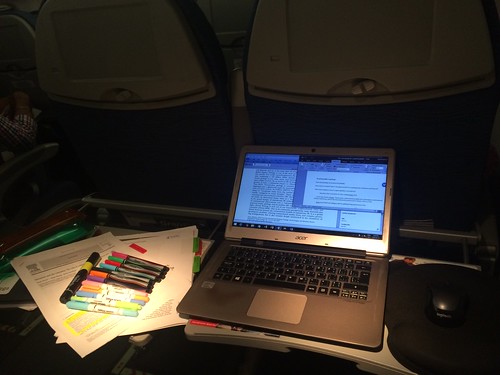I’ve admitted this clearly from day 1: I ALWAYS HAVE A TERRIBLE TIME DEALING WITH REVISE-AND-RESUBMIT MANUSCRIPTS. Yes, I know that Dr. Sara Mitchell would say “R&R is the goal”, but still, it’s SO HARD for me to cope with reading reviewers’ comments and making the revisions.
I have published quite a bit and yet I still dread reading reviews. I always have this inner fear that I’m not going to be able to properly respond to reviewers and editor’s comments so as to get my work published.
Nevertheless, I have some experience writing letters responding to reviewers and editors. This is how I deal with the process. Hopefully my strategy will help others facing the same challenge. I just published 3 journal articles this summer, and all of these have gone multiple review rounds, so I have plenty of experience to share.
First things first: being a journal editor IS A THANKLESS JOB. It’s an unpaid volunteer activity that is necessary to advance a field. So, my first suggestion when writing Response-To-Reviewers-And-Editors (RTRAE) documents is:
DO NOT BE AN 4$$H0L3.
A polite RTRAE is much more likely to be well received than any document where you basically call reviewers (another thankless unpaid job) absolute 4$$H4TS. Anyhow…
This is the process I follow when I receive reviews:
1) Wallow in self-pity (this is standard procedure) for about 48 hours (sometimes more time is needed).
2) Cool-off and remember that people aren’t out to get me and that any negative reviews do not reflect on my own worth.
… determine how long is it going to take me to do this R&R and which tasks need to be done. This is my post on how to backcast an R&R:https://t.co/HrGNtMINhk
Once I have backcasted the R&R, I revise my DRM with more reasonable deadlines and I use the revised DRM to write…
— Dr Raul Pacheco-Vega (@raulpacheco) August 7, 2020
.. a Letter of Response to Reviewers and Editors.
This is my process, you can adapt as you see fit.
1) I say something to the effect of “thank you for taking the time to read and review my work”, because really, we ought to acknowledge that this is a thankless job.
2) Using my DRM, I respond point-by-point to suggestions made by reviewers and editors.
It is important to comment that most journal editors will tell you how they prefer this response. Some may accept a DRM, others may want a letter, others may want a letter AND A REDLINED redlined = marked up with track changes) version, etc.
If the suggestions are a tad generic, I respond with comments that are similarly generic. If the reviewer is very detailed, I respond with the same degree of engagement.
3) It’s not a requirement that you accept every suggestion. If you are not going to change something, make sure to explain why you’re not making these edits, and the supporting rationale. IF you disagree with a reviewer, politely state why and respond so that they can engage with the substance of your comments.
Rough reviewers are going to exist anywhere, so it’s important to take the criticism as a critique of the work, not an assessment on the value of a person. I have heard (and personally experienced) of very nasty editorial and reviewer comments.
Nobody is exempt from these. (at least in my experience!)
To the extent that reviewers do their job (suggest ways in which the article may be improved for publication) and editors do theirs (make a judgment call on the reviews and the actual contribution an article may make to their journal and the field) we can expect a relatively straightforward process. Obviously having an R&R never means that there is a guaranteed publication coming out of the process.
Revise-And-Resubmits DO get rejected after one, two, three or even four rounds of revisions.
We all have read #HereOnTwitter about nasty reviews, mean editors, etc. These things may happen, but I think all we can do is take those in stride and push back where/when necessary in a polite yet firm way.
I follow the same process for every round of revision. And yes, I often have had four or five rounds of R&R. Yes, I’ve had experiences of doing multiple revisions and yet get rejected in the end. Such is life, whatever.
Anyway, in short, I use the DRM and the Backcasting an R&R techniques to help me write the RTEARs. I hope this depiction of my process will be helpful to some of you.




0 Responses
Stay in touch with the conversation, subscribe to the RSS feed for comments on this post.